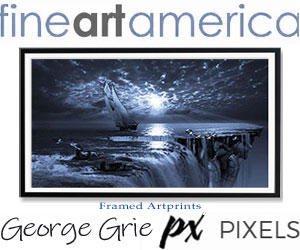Page 5 || Encyclopedia Article || Fantasy Arts || Modern Modern Surrealism Art Observation || Dali
I Introduction
(modern surrealism movement)
Dal, Salvador (1904-1989), Spanish painter, writer, filmmaker, and designer. He was one of the leading figures in the surrealist movement (see Surrealism), and his enormous talent for self-publicity made him an international celebrity.
II Early Years
(modern surrealism movement)
Dal was born in Figueres, Catalonia, near Barcelona. His father, a notary, was an atheist and his mother was a devout Catholic. An older brother, also called Salvador, had died nine months before Dal's birth, and Dali later wrote that he identified morbidly with his namesake and had an overwhelming desire for attention. According to the account in his autobiography The Secret Life of Salvador Dal (1942), his childhood was marked by hallucinations and extraordinarily intense emotional experiences, in which many of his later dreams and obsessions were prefigured.
From an early age Dal showed a talent for art. Between 1921 and 1926 he studied intermittently at the San Fernando School of Fine Arts in Madrid. In 1924 he was suspended for a year for insubordination, and in 1926 he was expelled for his rebellious behavior, which included a refusal to take an examination because he felt that his teachers were not qualified to judge him. However, during this time he perfected his meticulous drawing technique by emulating the 17th-century Dutch still-life masters and 19th-century French and Spanish genre painters. Dal's paintings had attracted attention in student exhibitions, and in 1925 he had a successful one-man show at a Barcelona gallery.
In his early work Dal was influenced by the abstract art of his compatriots Pablo Picasso and Joan Mir, and he experimented with various avant-garde styles, including cubism. After 1928 he returned to an earlier interest in the so-called metaphysical painting of Italian artists Giorgio de Chirico and Carlo Carr. The strong concern of the metaphysical painters with the evocative power of symbols suggested deliberate investigation of dream imagery according to the principles of Sigmund Freud, the founder of psychoanalysis. Dal's precise realistic technique was admirably suited to the creation on canvas of the hallucinatory atmosphere of dreams.
III Surrealist
(modern surrealism movement)
In 1929 Dal moved to Paris and became officially a surrealist. That year he made the first surrealist film, Un chien Andalou (An Andalusian Dog), in collaboration with director Luis Buuel. The film shocked audiences with such images as a razor slicing an eyeball. Also in 1929 Dal had a one-man show in Paris, from which every work was sold. The preface to the exhibition catalogue was written by Andre Breton, the founder of surrealism, and it marked Dal's formal membership in the group.
During the 1930s Dal painted the majority of the works for which he is now most famous. These include some of the most celebrated surrealist images, such as the limp watches in The Persistence of Memory (1931, Museum of Modern Art, New York City). In contrast to the usual surrealist preoccupation with the phenomenon of unconscious thought, Dal insisted on a more consciously objective presentation of the experience of paranoid obsession. He depicted with great precision familiar objects in illogical settings and combinations, describing his paintings as "handmade dream photographs" and his technique as the "paranoiac-critical method." Many of his paintings make use of repeated imagery-the multiple watches of The Persistence of Memory, for example-and of shapes that metamorphose, or turn into other objects, and are therefore open to multiple interpretations.
Like many of the surrealists, Dal quarreled with Breton, and in 1939 he was officially expelled from the movement. By this time he was in any case moving away from surrealism to a more naturalistic style, influenced by his admiration for Renaissance art, which he saw on visits to Italy. In 1940 Dal left war-torn Europe and moved to the United States, where he remained until 1948. In addition to paintings, he created sets and costumes for several ballets, made handcrafted jewelry, and produced a quantity of commercial illustrations that brought him financial success. He even contributed a dream sequence to the movie Spellbound (1945), directed by Alfred Hitchcock.
